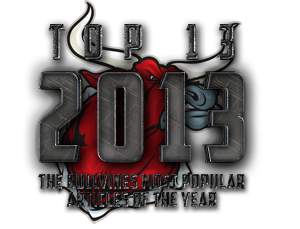
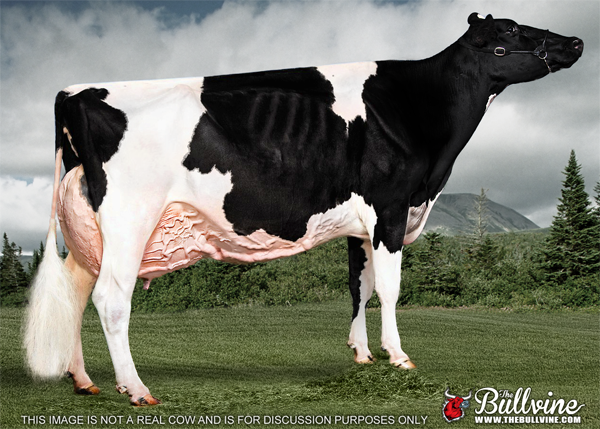
The Bullvine Holstein Mature Model Cow
Read More at www.thebullvine.com/the-bullvine/perfect-holstein-cow/
If foreign substances are illegal for show cows, then shouldn’t they be illegal for cow pictures as well?
Like major league baseball the show ring has had a transformation in its perspective on drugs and ethics (Read more: The Code: The Unwritten Rules of Dairy Cattle Show Ethics). However, similar to the world of cycling, the dairy cattle marketing world has yet to see this transformation (Read more: Lance Armstrong, Drugs and the Dairy Industry) That really got me thinking that, if foreign substances are illegal for show cows, then shouldn’t they be illegal for cow ads as well?
Toplines that have had “hair” added, udder texture that has been enhanced and teat placement that has been corrected, all seem to be more prevalent than ever. Don’t even get me started about how some photographers have single handedly solved many breeder’s challenges of getting clean long necked cattle. Even the basics of getting good lighting seem to have gone out the window. Photoshop has made it too easy and more profitable for photographers to do it in post production than making sure the animal was the real deal to start.
With Great Expectations Comes Great Disappointment
In an industry that already has unreal expectations about real beauty, the use of Photoshop in the fashion-modeling world has made for even greater unrealistic expectations of appropriate body image – especially among impressionable children and adolescents. But there is one big difference between the photo retouching of fashion models and photo retouching of cattle images – The models are not the product that people are buying.
Right there is the big issue that I think many people are missing in this whole debate. While we have all become complacent about fashion models whose appearance has been retouched, we have also become complacent about dairy cattle photos that have been retouched. It has come to the point where most don’t even look at photos anymore to gage a sire’s potential (Check out our recent Facebook poll).
I can remember when we first marketed Calbrett-I HH Champion and we put a lineup of 10 VG 2YR test sire daughters photo’s together – the first in the industry to do so. But I am sure with genomic sires being used on such high caliber animals it will happen again soon. It sold semen like none other. Today when a new proven sire comes out, you are lucky to get two or three daughter shots and that’s about it. For genomic sires you are often lucky to get a picture of the sire himself let alone a picture of his dam (often it is a heifer picture as she was contracted and flushed at such a young age).
This has me thinking whether there is value in picturing anymore? I realized that while pictures today may not directly sell semen or embryos, they do a great job of generating hype. While everyone likes to bash some livestock photographers about the ethics of their photos, there is no question that you can share a great shot of a show-winning cow on Facebook and the thing goes Viral.
So what is the average ethical breeder to do when they don’t have some great show-winning cow but wants to market their cattle?
In thinking about this challenging question, I remembered what Unilever did with their Dove line of products when facing a very similar challenge. In 2004 they released The Dove Campaign for Real Beauty. The principle behind the campaign is to celebrate the natural physical variation embodied by all women and inspire them to have the confidence to be comfortable with themselves.
In the dairy industry three great ways I can see for this to be done are as follows:
-
Show all the angles
Instead of just a boring side shot, try to get different angles of your cattle. Three quarter rear shots are great at grabbing attention. Show multiple angles of your cow, in order to gain maximum attention. It is also hard to fake a shot when you see all sides of the animal as any changes would be amplified when comparing angles. (Read more: 5 Tips to Make Your Next Dairy Magazine Ad the Best Ever and All Talk and No Action) - Leverage the Power of Video
There is nothing better than video to help you sell and promote your cattle. It does not have to be some big costly production. In fact, it can be much cheaper than having a professional photographer come in. You can simply use your hand held blackberry or smartphone and snap some quick snippets to share with potential buyers on Facebook or on your website. Even good quality digital video cameras can be picked up at your local Best-Buy or Wal-Mart. Many even come with some basic software so that you can add your own titles, images, and music. (Read more: Nothing Sells Like Video) - Share it on Facebook
It’s really pretty simple. Set up your own Facebook page or a Facebook Fan page for your farm. Tell your story. Did you have a great classification round and want to let the world know? Share it on Facebook. Had a great flush and want to sell the embryos from it? Share it on Facebook. Your friends will spread the word and before you know it, you too will start to have a loyal following. (Read more: 7 Reasons Why Your Dairy Farm Needs to be on Facebook and The Fakebook – Our secret is exposed)
The Bullvine Bottom Line
Yes! There are certainly photographers who have held true to their ethics, however, it seems that they are now in the minority rather than the majority. I understand that Photoshop, a program that I love to use, makes life easier for all. There comes a point, however, where ease should not outweigh ethics, especially when you are editing the appearance of the very genetic product that you are selling. The reality is that no cow is perfect, not even in pictures
To learn how to get your farm on Facebook download this free guide.

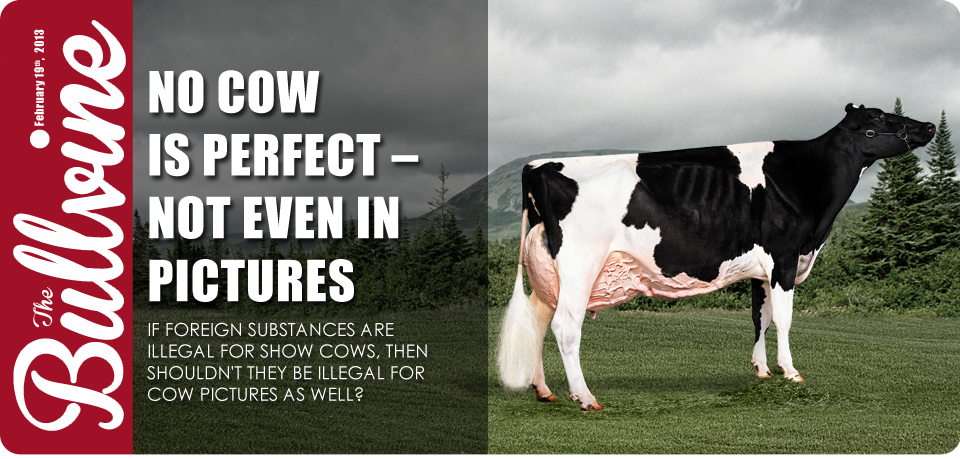






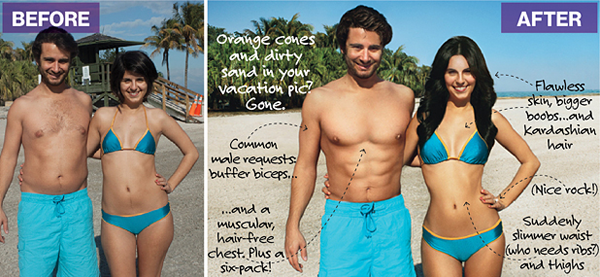
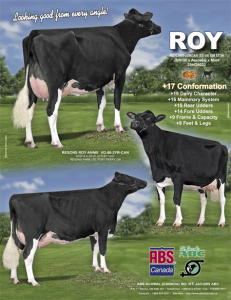










Leave a Reply
You must be logged in to post a comment.